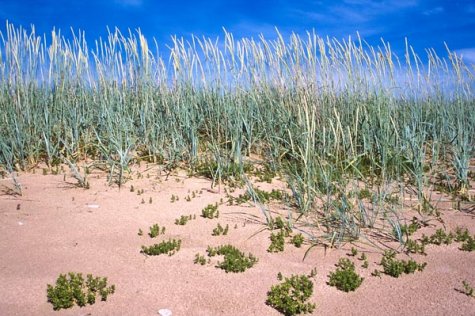Lyme grass binds the sands
Photo: Arne Ader
Translation: Liis
Lyme grass and sea sandwort. Harilaid.
| Lyme grass |
Liiv-vareskaer
|
Leymus arenarius |
This characteristic grass on dunes and sandy shores in Estonia has ended its flowering for this year with the end of July. It is often more than a metre high, and so has a strong stem. It has blueish-green leaves that can stand the sea winds and are covered with a waxy layer that prevents water from evaporating from the plant. In the dry saline sand that is moved around by the wind and sea water the lyme grass as binder of the sands is one of the pioneer plant species. Autumn storms frequently shift the sands, and the plants then either get buried in the sand or sometimes the well developed root system is bared, but the lyme grass still hinders the movement of the sands and provides growing opportunities for the next set of plant species.
Arne’s photo shows lyme grass and sea sandwort: the combination of these two plants is quite common on our beaches.
Its Estonian name, "vareskaer", means crow's oats.









